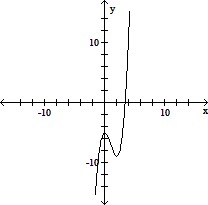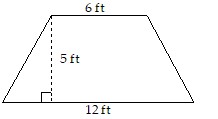Use the graph of the function f(x) to locate the local extrema and identify the intervals where the function is concave up and concave down.
A. Local minimum at x = 0; local maximum at x = 2; concave up on (0, ?); concave down on (-?, 0)
B. Local minimum at x = 2; local maximum at x = 0; concave down on (0, ?); concave up on (-?, 0)
C. Local minimum at x = 0; local maximum at x = 2; concave down on (0, ?); concave up on (-?, 0)
D. Local minimum at x = 2; local maximum at x = 0; concave up on (0, ?); concave down on (-?, 0)
Answer: D
You might also like to view...
Find Dxy.y = sinh(4x2 + 4x)
A. cosh(4x2 + 4x) B. (8x + 4) cosh(4x2 + 4x) C. sinh (8x + 4) cosh(4x2 + 4x) D. cosh (8x + 4)
Solve the problem.Given the acceleration, initial velocity, and initial position of a body moving along a coordinate line at time t, find the body's position at time t.a = 12 cos 3t, v(0) = -6, s(0) = -10
A. s = -  sin 3t - 6t -
sin 3t - 6t - 
B. s =  sin 3t - 6t -
sin 3t - 6t - 
C. s =  cos 3t + 6t -
cos 3t + 6t - 
D. s = -  cos 3t - 6t -
cos 3t - 6t - 
Find the area of the figure.
A. 23 ft2 B. 45 ft2 C. 90 ft2 D. 36 ft2
Find the total area of the region between the curve and the x-axis.y =  ; 1 ? x ? 3
; 1 ? x ? 3
A. 
B. 
C. 3
D. 